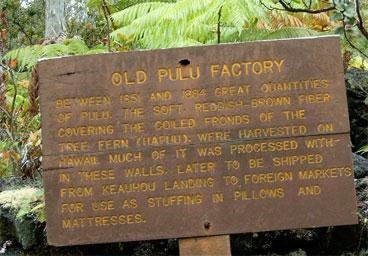
NPS/Tyler Paul 
Following the East Rift Zone of Kīlauea, the Nāpau Trail provides opportunities for hikers to experience a diversity of environments in Hawaiʻi Volcanoes National Park. The hike is through varied terrain ranging from recent lava flows to dense tree fern rain forests.
The Nāpau Trail begins at the Maunaulu parking area (approx. 3.5 miles down the Chain of Craters Road). The Nāulu Trail, which links to the Nāpau Trail, begins across the road at the Kealakomo parking area (approx. 9.7 miles down the Chain of Craters Road). RegisterAll eight backcountry campsites (Ka‘aha, Halapē, Keauhou, ‘Āpua Point, Nāpau, Pepeiao, Red Hill Cabin and Mauna Loa Cabin) and all offsite/dispursed backcountry camping require a permit. See the Backcountry Hiking page for instructions on how to obtain your permit. Be PreparedFacilities The lower end of the historic Kalapana trail has been covered by miles of lava.The upper section of the trail is no longer maintained, densely overgrown and is extremely difficult to follow. DO NOT plan on using this trail. HazardsTrail Conditions The ahu (stone cairn) trail markers can be difficult on first sight to distinguish from the surrounding lava. However, the trails are well marked and hikers soon become accustomed to spotting the cairns in the black lava fields. Sunlight may be intense. Hats, sunglasses, and sunscreen are preventive measures against sunburn. Start your trek early to avoid being on park trails during the hottest times of the day. Volcanic Hazards Fire Hazards
Learn more about these remnants of a 19th century Hawaiian industry
Give us your feedbackLet us know about trail, cabin, or campsite conditions. Did you notice anything damaged or dangerous conditions that rangers should be aware of? File a Trip Report. |
Last updated: September 9, 2025
